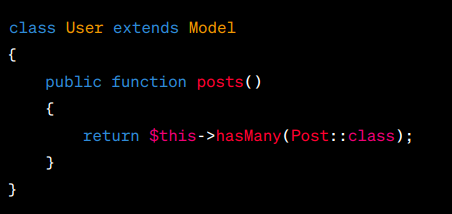Hi readers, If you’re working with Laravel, you’re likely aware that the framework offers a convenient way to manage relationships between models using Eloquent. But what if you need to access this relationship data in your Blade templates? So, now we are going to learn how can we access relationship data in our blade file.
First, let’s assume that we have two models, User and Post, where a user can have many posts. We can define this relationship in our User model like so:
class User extends Model
{
public function posts()
{
return $this->hasMany(Post::class);
}
}
Now, let’s say we want to display a list of all the posts for a given user in a Blade template. We can do this by passing the user model to the view and then using the @foreach directive to iterate over the posts:
<!-- UserController.php -->
public function show(User $user)
{
return view('users.show', [
'user' => $user,
]);
}
<!-- users/show.blade.php -->
<h1>{{ $user->name }}'s Posts</h1>
<ul>
@foreach ($user->posts as $post)
<li>{{ $post->title }}</li>
@endforeach
</ul>
In this example, we’re accessing the posts relationship on the $user model, and then using the @foreach directive to loop over each post and display its title.
But what if we want to display additional information about each post, such as its author or comments? We can do this by chaining additional relationships onto the original relationship. For example, we could modify our Blade template to display the author’s name for each post:
<!-- users/show.blade.php -->
<h1>{{ $user->name }}'s Posts</h1>
<ul>
@foreach ($user->posts as $post)
<li>
{{ $post->title }} by {{ $post->user->name }}
</li>
@endforeach
</ul>
Related: Understanding Laravel’s HasMany Relationship
In this updated example, we’re chaining the user relationship onto the post relationship, allowing us to access the author’s name using $post->user->name.
Overall, accessing relationship data in Laravel Blade is a straightforward process that can greatly simplify your code and make it easier to work with related models. By following these simple examples, you’ll be on your way to using Eloquent relationships in your Blade templates in no time!


1 thought on “How to Access Relationship Data in Laravel Blade”